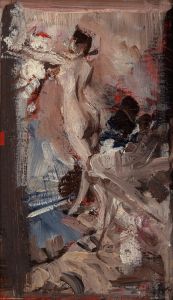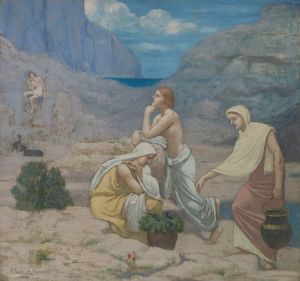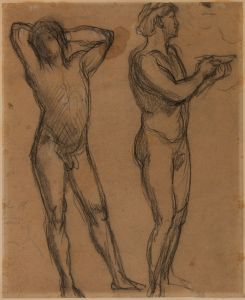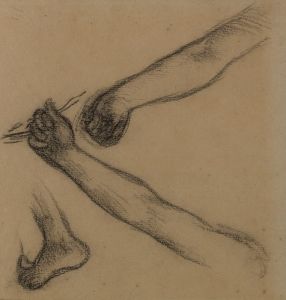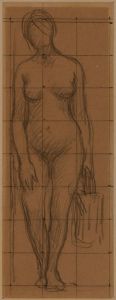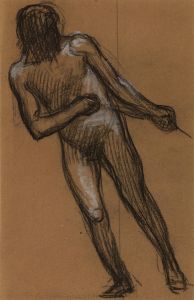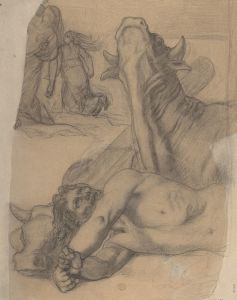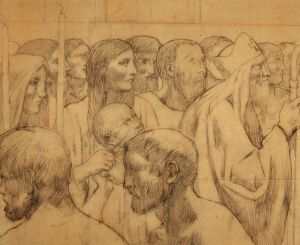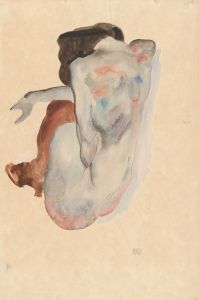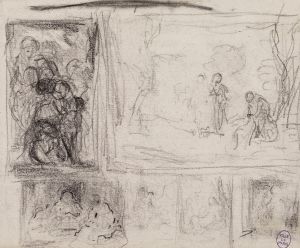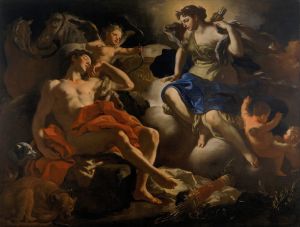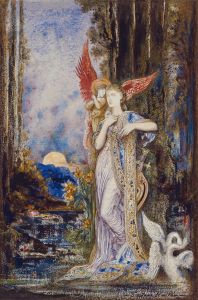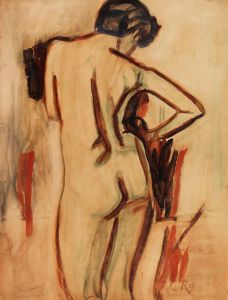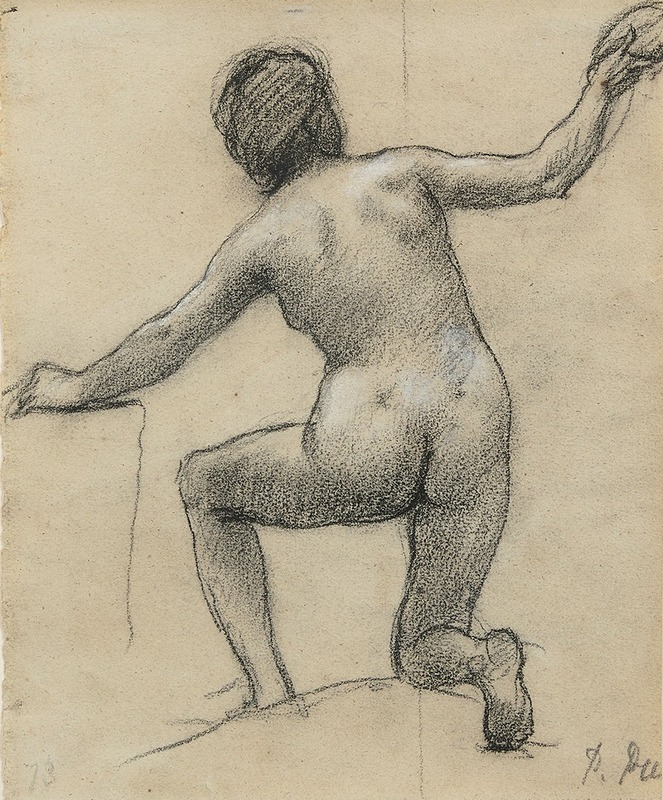
Nu féminin de dos, étude pour ‘L’Eté’
A hand-painted replica of Pierre Puvis de Chavannes’s masterpiece Nu féminin de dos, étude pour ‘L’Eté’, meticulously crafted by professional artists to capture the true essence of the original. Each piece is created with museum-quality canvas and rare mineral pigments, carefully painted by experienced artists with delicate brushstrokes and rich, layered colors to perfectly recreate the texture of the original artwork. Unlike machine-printed reproductions, this hand-painted version brings the painting to life, infused with the artist’s emotions and skill in every stroke. Whether for personal collection or home decoration, it instantly elevates the artistic atmosphere of any space.
Pierre Puvis de Chavannes was a prominent French painter known for his mural-style works and his influence on the Symbolist movement. One of his notable works is "Nu féminin de dos, étude pour ‘L’Eté’" (Female Nude from the Back, Study for 'Summer'), which serves as a study for a larger composition titled "L’Eté" (Summer). This piece exemplifies Puvis de Chavannes' unique approach to form and composition, reflecting his interest in classical themes and idealized figures.
"Nu féminin de dos" is a preparatory study, which means it was created as part of the artist's process in developing the final composition for "L’Eté." Studies like this one were common in Puvis de Chavannes' practice, as they allowed him to explore different poses, lighting, and anatomical details before committing to the final work. The study features a female figure depicted from the back, showcasing Puvis de Chavannes' skill in rendering the human form with a sense of grace and subtlety.
Puvis de Chavannes was known for his muted color palette and harmonious compositions, often drawing inspiration from classical antiquity and mythology. His works frequently feature serene landscapes and idealized human figures, creating a sense of timelessness and tranquility. In "Nu féminin de dos," these characteristics are evident in the soft contours of the figure and the understated elegance of the pose.
The study was likely part of Puvis de Chavannes' preparation for a larger mural or panel, as he was renowned for his large-scale public works. His murals can be found in various public buildings in France, including the Panthéon in Paris and the Musée des Beaux-Arts in Lyon. These works often explore themes of nature, mythology, and human experience, reflecting the artist's interest in creating art that transcends the everyday and speaks to universal themes.
Puvis de Chavannes' influence extended beyond his own time, impacting a range of artists and movements. His emphasis on flat, decorative surfaces and symbolic content resonated with the Symbolists and later artists such as the Nabis. His work also anticipated some aspects of modernism, as he moved away from the detailed realism that characterized much of 19th-century art.
"Nu féminin de dos, étude pour ‘L’Eté’" is a testament to Puvis de Chavannes' meticulous approach to composition and his ability to convey beauty and harmony through simplicity. While the study itself may not be as widely recognized as some of his completed murals, it offers insight into the artist's creative process and his dedication to achieving a balance between form and content.
Overall, Pierre Puvis de Chavannes remains a significant figure in the history of art, celebrated for his contributions to the development of modern art and his ability to evoke a sense of timeless beauty through his work. "Nu féminin de dos" is a small but important part of his artistic legacy, illustrating the careful planning and classical inspiration that underpin his larger compositions.





